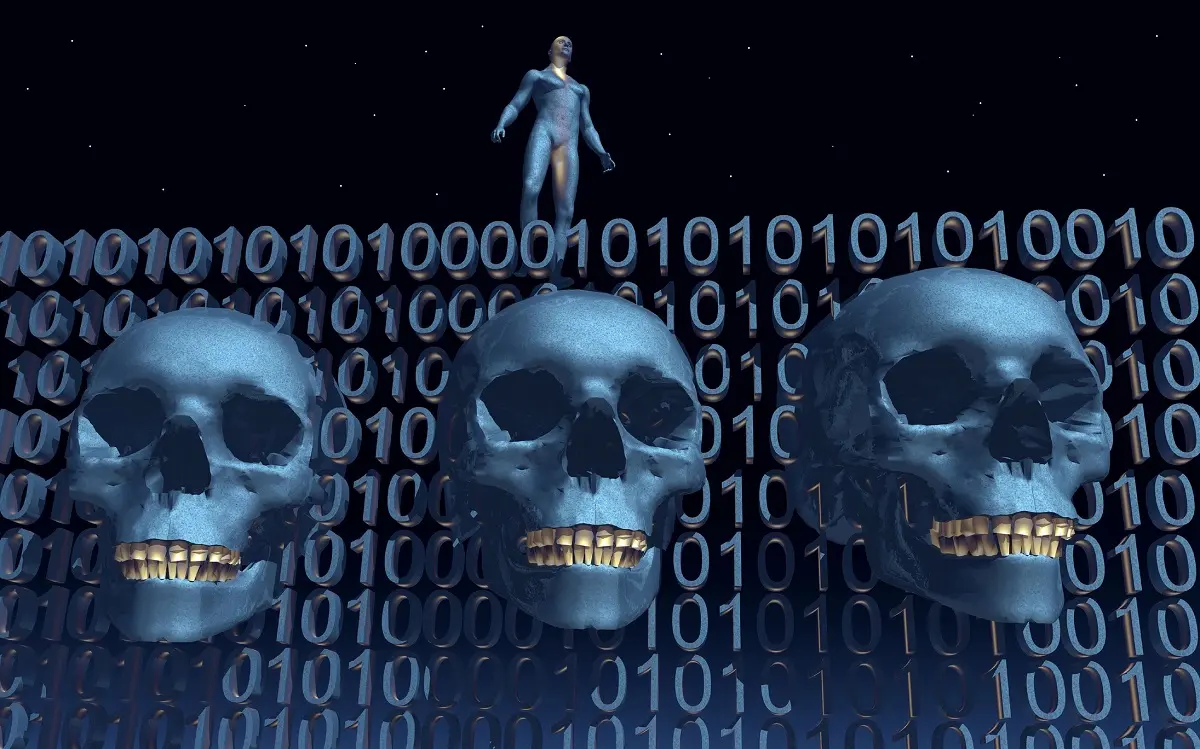How Government and International Agencies Could Mitigate the Existential Risks from Advanced Artificial Intelligence
Experts now believe that Transformative AI can seriously result in existential risk for humans in the near future.

Introduction
With the recent launch of Chat GPT (a generative AI technology), we are witnessing an exponential increase in the public discourse, on not only the benefits of AI but also the dangers it may causes to humanity. The current state of public opinion on AI, on one side is that there is no doubt it can help solve humanity’s most pressing problems like (poverty etc.), and on the other side it also firmed up the skepticism of AI by leaps and bounds to extent that experts now believe that Transformative AI can seriously result in existential risk for humans in the near future.
Existential risk can be viewed in different forms as:
- Extinction risk – AI machines directly or indirectly killing humans or stopping human reproduction, eventually resulting in an extinction.
- Disempowerment risk – AI could take full control of humans and prevent all future generations from living their life to the fullest.
The increase beliefs about existential risks are backed by research community which believes that there is 35% chance will achieve transformative AI by 2036 [8] which is a little over a decade from now.
Background
Government agencies across the world started working to regulate all aspects of AI including design, development, deployment, and use of AI. For example:
- In October 2022, US’s White House Office of Science and Technology Policy released “Blueprint for an AI Bill of Rights” [9]
- In November 2019, the Australian government released “The Artificial Intelligence Ethics Framework” [10]
- In Jan 2019, Singapore government released - “Model AI Governance Framework” [11]
- In August 2023, UK government released a policy white paper on “A pro-innovation approach to AI regulation” [14]
- In April 2023 China release a draft resolution “Measures to Regulate Generative AI” [12]
- In June 2022, Canada released a policy document – “The Artificial Intelligence and Data Act (AIDA)” [13]
- In April 2019, EU released a report - “Ethics guidelines for trustworthy AI” [15]
Although these policies are wide ranging and address the concerns of existential risk for humans to certain extent, they do not eliminate the risk completely. Secondly, they are limited because governments by nature and function primarily to serve their citizens and existential risk caused by AI is a universal and global problem impacting the entire humanity and not limited to a specific region or country.
My Opinion
Humans have always been governed by moral principles. The common lens used in these policy documents, i.e., regulating AI using an ethical framework, is a good foundation. However, most of these policies fall short of offering a unified framework for addressing the operational morality and functional morality (Machine Morality [16]).
AI Ethics is a field of study of moral and ethical implications of AI. It mainly addresses how humans design and use AI- i.e., the operational morality.
On the contrary, Machine Morality (or Machine Ethics) deals with adding or ensuring moral behaviors into machines that use AI so that machines can make moral functional decisions in the absence of direct human interaction - i.e. the functional morality.
There is a debate on whether AI can become autonomous and capable of making moral judgements without direct human instructions. Practically speaking humans may not be able to monitor, interact and instruct the machine forever. As we move towards achieving full transformative AI, this is a credible threat which may result in existential risk. Hence, there is a need to formulate a unified ethical framework to address both the operational and functional morality aspects of AI.
The philosophical debate around ethics and human morality has evolved significantly over the past few centuries – from Kantian theory (Immanuel Kant [18]), Cartesian theory (Rene Descartes [19]), Utilitarian theory (Peter Singer [20]), Animal Rights theory (Tom Regan [21]) and Environmentalism theory (Alan Marshall [22]). Isaac Asimov was one of the first to propose functional morality framework for robots through his “Three laws of Robotics” [23] in 1942 short story “Runaround”.
Should we adopt Kant’s Categorical Imperative, or Peter Singer’s Utilitarian model or Isaac Asimov’s Three Laws? Or perhaps a more modern and relevant integrated framework (Bertram [25])? Agencies can investigate and adopt a hybrid of these frameworks.
Furthermore, I believe governments by nature, function primarily to serve their citizens and existential risk caused by AI is a universal and global problem impacting the entire humanity and not limited to a specific region or country. There is a need for global AI alliance agency which works with local agencies for these guidelines for the following reasons:
- Moral relativism - leaving it to local/regional agencies to develop these principles effectively negates the value - take the example of nuclear technology. Hiroshima and Nagasaki bombings were thought to be morally less abhorrent compared to other available options (Henry Stimson [26]) in response to the Japan's attack on Pearl Harbor during World War II.
- AI diplomacy - "atomic diplomacy" was heavily used by countries like USA as a foreign policy tool. Countries could use AI as a foreign policy and non-military diplomatic tool to when dealing with to other countries.
Conclusion
Charles Darwin [24] considered morality a crucial instinct for survival in social animals. With the advent of transformative AI, we could be facing a similar existential crisis. Humanity needs to unite and work together to save humanity. The proposed unified ethical framework and considerations for the global alliance described above could help unite and save humanity again.
References
1. Isaac Asimov Quotes - Isaac Asimov Quotes (Author of Foundation) (goodreads.com)
2. Three laws of robotics - Three laws of robotics | Definition, Isaac Asimov, & Facts | Britannica
3. Machine Morality - Machine Morality: Computing Right and Wrong – Yale Scientific Magazine
4. The Morality of Hiroshima and Nagasaki - The Morality of Hiroshima and Nagasaki, 75 Years Later| National Catholic Register (ncregister.com)
5. The Art of Atomic Diplomacy - The Art of Atomic Diplomacy (thoughtco.com)
6. The case for reducing existential risks - The case for reducing existential risks - 80,000 Hours (80000hours.org)
7. Transformative AI - Some Background on Our Views Regarding Advanced Artificial Intelligence | Open Philanthropy
8. Two-year update on my personal AI timelines - Two-year update on my personal AI timelines — AI Alignment Forum
9. Blueprint for an AI Bill of Rights - What is the Blueprint for an AI Bill of Rights? | OSTP | The White House
10. AI Ethics Framework - Australia’s Artificial Intelligence Ethics Framework | Department of Industry, Science and Resources
11. Model AI Governance Framework - SGModelAIGovFramework2.pdf (pdpc.gov.sg)
12. Draft Measures to Regulate Generative AI - China Proposes Draft Measures to Regulate Generative AI | Inside Privacy
13. The Artificial Intelligence and Data Act (AIDA) – Companion document (canada.ca)
14. A pro-innovation approach to AI regulation - A pro-innovation approach to AI regulation - GOV.UK (www.gov.uk)
15. Trustworthy AI - Ethics guidelines for trustworthy AI | Shaping Europe’s digital future (europa.eu)
16. Machine Morality - Machine Morality: Computing Right and Wrong – Yale Scientific Magazine
17. Machine ethics - Machine ethics - Wikipedia
18. Immanuel Kant - Immanuel Kant - Wikipedia
19. Rene Descartes - René Descartes - Wikipedia
20. Peter Singer - Peter Singer - Wikipedia
21. Tom Regan - Tom Regan - Wikipedia
22. Alan Marshall - Alan Marshall (New Zealand author) - Wikipedia
23. Three laws of robotics - Three Laws of Robotics - Wikipedia
24. Darwin and the Descent of Morality - Darwin and the Descent of Morality | Discovery Institute
25. Bertram F. Malle - Integrating robot ethics and machine morality: the study and design of moral competence in robots | SpringerLink
26. Henry Stimson - Henry L. Stimson - Wikipedia
